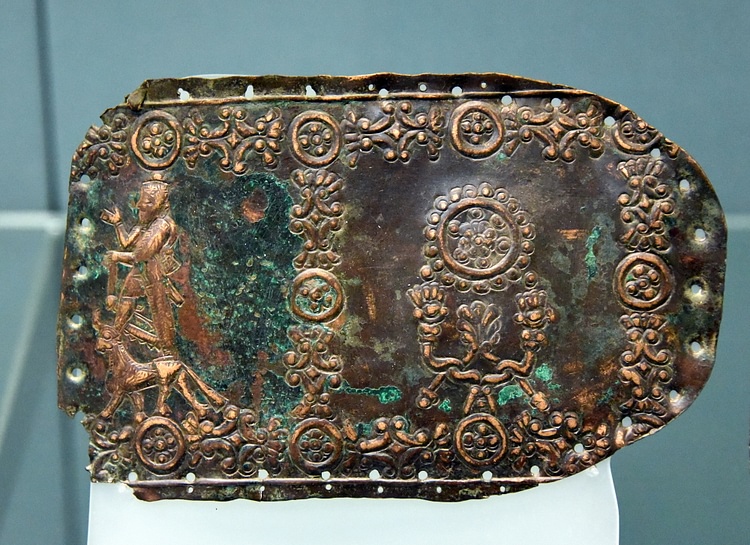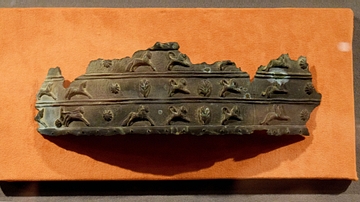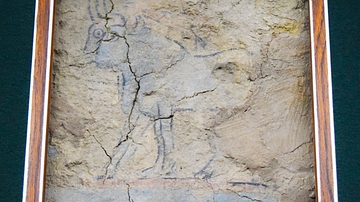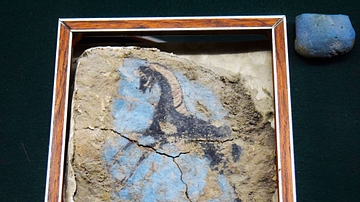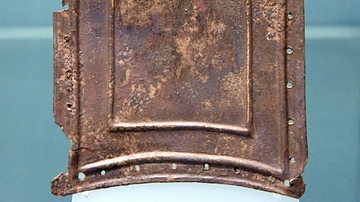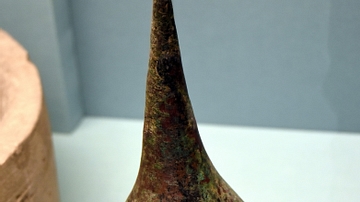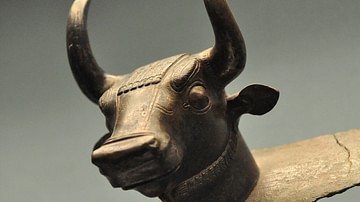Illustration
This fragment from a bronze belt was reused as a belt end. The embossed or chased design is divided by discs and scroll-crosses into panels with discs above stylised trees. A deity stands on a bull. The holes around the edge are for nails or stitching. From Eastern Anatolia, in modern-day Turkey. Urartian, 7th century BCE. (The British Museum, London).
About the Author
Cite This Work
APA Style
Amin, O. S. M. (2018, November 29). Urartian Fragment from a Bronze Belt. World History Encyclopedia. Retrieved from https://www.worldhistory.org/image/9541/urartian-fragment-from-a-bronze-belt/
Chicago Style
Amin, Osama Shukir Muhammed. "Urartian Fragment from a Bronze Belt." World History Encyclopedia. Last modified November 29, 2018. https://www.worldhistory.org/image/9541/urartian-fragment-from-a-bronze-belt/.
MLA Style
Amin, Osama Shukir Muhammed. "Urartian Fragment from a Bronze Belt." World History Encyclopedia. World History Encyclopedia, 29 Nov 2018, https://www.worldhistory.org/image/9541/urartian-fragment-from-a-bronze-belt/. Web. 03 Jul 2025.

